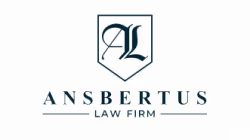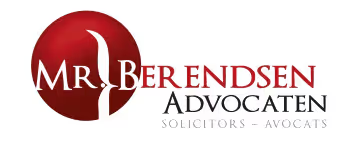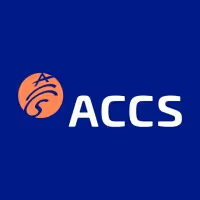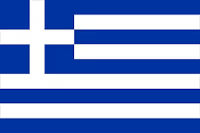Premier Debt Collection in The Netherlands
Your trusted debt collection agency in the Netherlands. Upload your claim for swift, reliable recovery with no upfront fees. For a comprehensive understanding of local debt collection practices, explore our in-depth guide.

The Ultimate Guide to Debt Collection in The Netherlands
Struggling with unpaid invoices in the Netherlands? Debitura streamlines your debt recovery process, offering a convenient, easy, and risk-free solution. Our guide provides step-by-step instructions, sample contracts, free templates, and best practices for debt collection under Dutch law.
Save time and ensure compliance by choosing Debitura as your local partner for effective Dutch debt recovery services.
Overview of the Key Players in Dutch Debt Recovery
In the Netherlands, debt recovery follows a structured approach, clearly defining the roles of collection agencies, bailiffs, and attorneys. Here's how each contributes to a compliant and effective recovery process:
Collection Agencies in the Netherlands
These agencies initiate the debt recovery process. They engage in negotiations and communication with debtors, adhering to standards set by the Dutch Debt Collection Services Quality Act. Although they manage extrajudicial debt recovery, they require bailiffs or attorneys for legal enforcement and court proceedings.
Court Bailiffs (Judicial Officers) in the Netherlands
Appointed by law, bailiffs in the Netherlands have the authority to enforce debts nationwide. Bailiffs are empowered to send demand letters, initiate legal proceedings, and enforce court rulings, including asset seizure. Bailiffs require a court order to initiate debt enforcement. Bailiffs can obtain court orders themselves in Dutch subdistrict courts for claims up to EUR 25,000, but only collection lawyers can present cases exerting EUR 25.000 before court and thereby get a court order. Affiliated with the Royal Professional Organization of Judicial Officers is required for all judicial officers in the netherlands.
Collection Lawyers in the Netherlands
Specializing in complex debt recovery cases, lawyers are pivotal for claims exceeding EUR 25,000. They prepare legal documents, such as writs of summons, and can file for bankruptcy proceedings against Dutch debtors. Their expertise covers the full spectrum of debt recovery, providing comprehensive legal representation and advice.
Tap into Debitura's expert network of local debt recovery bailiffs and lawyers. Start your claim now.
Dutch Debt Collection Laws and Regulations: Legal Context
Understanding and adhering to the robust legal framework of the Netherlands is essential for successful and ethical debt collection. It's not only about legal compliance but also about effective and fair recovery of debts, which is fundamental for maintaining a reputable standing in the industry.
The Regulatory Environment and Civil Court System
The Netherlands operates under a Civil Law system with codified rules. The judiciary is structured to handle claims based on their monetary value:
- County Courts (Kantongerecht): Address claims up to EUR 25,000.
- District Courts (Rechtbank): Handle larger claims.
- Court of Appeal (Gerechtshof) and Supreme Court (Hoge Raad): Serve as higher judicial instances.
The Dutch Authority for the Financial Markets (AFM) oversees debt collection activities, ensuring industry compliance and investigating complaints.
Key Legislation in Debt Collection
Debt collection in the Netherlands is governed by several key laws:
- Dutch Civil Code (Burgerlijk Wetboek): Outlines debtor and creditor rights, including procedures for debt notification, interest rates, and obtaining court orders for enforcement.
- Dutch Personal Data Protection Act: Governs the handling of personal debtor data, emphasizing confidentiality and security.
- Code of Conduct by the Dutch Association of Debt Collection Companies (NVI): Sets ethical guidelines for collection practices, including communication standards and debtor privacy.
- Debt Collection Services Quality Act (Wet kwaliteit incassodienstverlening - Wki): Ensures quality and professionalism in the debt collection industry.
- Dutch Bankruptcy Act (Faillissementswet): Governs insolvency and bankruptcy processes, including creditor rights.
- European Directive for Late Payment in Business Dealings: Establishes payment terms for business agreements.
Consumer Protection and Restrictions on Debt Collection Practices
Consumer protection laws in the Netherlands ensure fair interactions and transactions between businesses and consumers. They emphasize:
- Clear information disclosure about terms, pricing, and policies.
- Rights to dispute resolution and complaints to the ACM.
- Prohibition of unfair contract terms favoring businesses.
Ensure compliant and ethical debt recovery with Debitura.
Start now with no upfront costs — create your free profile here.
Overview of the Amicable Collection Process in the Netherlands
Typically debt collection will start with the so-called amicable phase, trying to find solution with your debtor without involving the courts. Navigating through the amicable collection process in the Netherlands requires a clear understanding of the legal landscape and a strategic approach. This section provides a detailed, step-by-step guide to effectively manage out-of-court debt recovery. It includes practical advice, free templates, and essential resources to support your efforts.
- Payment Terms: 30 days for B2B/public authorities; consumer terms flexible but typically 14 days.
- Statute of Limitations: 2 years for consumer, 5 years for business invoices; can be reset with a written reminder.
- Essential Documentation: Includes contracts, invoices, and communication logs.
- Communication: Start with a phone call, followed by payment reminders to resolve amicably.
- Demand Letter: Escalates the matter, indicating legal action with a 16-day payment deadline.
- Fees and Interest: Law allows a €40 fee, additional collection costs, and statutory interest for late payments.
- Payment Arrangements: Structured plans for installment payments can be negotiated if full payment isn't feasible.
Mastering Amicable Debt Collection in The Netherlands
Amicable debt collection emphasizes a relationship-centric approach to recouping owed monies, with a strong focus on understanding and negotiation instead of conflict. This technique cherishes the upkeep of a good relationship between the creditor and the debtor, striving for resolutions that honor the debtor's circumstances while securing the creditor's fund recovery. It advocates for a non-confrontational route suitable for undisputed claims, sidestepping the intricacies and financial burden of legal proceedings.
We advocate for initiating with amicable debt collection, barring instances where your claim is contested or entangled in complex legalities.
The Crucial Role of Collection Agencies in Amicable Settlements in The Netherlands
In the realm of amicable settlements, collection agencies are fundamental, particularly for creditors who are either too occupied or lack the necessary acumen for efficacious debt recovery. Firms such as Debitura are adept at offering tailored services, commencing with the accurate determination of debts and debtors and moving on to commence dialogues through reminders or formal notifications. Their dispassionate viewpoint, unmarred by personal stakes, frequently culminates in more effective debt resolution by facilitating neutral, proficient arbitration.
Perks of Choosing Amicable Debt Settlement
Electing amicable debt collection is mutually beneficial; it allows creditors to dodge the expenses associated with legal proceedings and maintain important business ties owing to the method's considerate nature. Debtors are afforded more flexible repayment options, alleviating economic pressure and nurturing favorable sentiments towards the creditor. This strategy accentuates mutual respect and empathy, laying the groundwork for a favorable setting to settle financial duties.
Shifting Gears from Amicable to Judicial Debt Recovery
Though amicable debt collection presents numerous advantages, there are scenarios where legal recourse becomes a consideration. Indicators prompting a shift towards judicial recovery encompass non-communication, continual failure to uphold financial commitments, or intentional dodging by the debtor. Resorting to legal measures should be a meticulously pondered option of last resort, due to the hefty expenses and duration associated with legal actions, and is generally advised after all amicable avenues have been thoroughly explored.
amicable debt collection
Upload your claim and get started with our 100% no-cure-no-pay collection solution.
Get started with amicable collection. 100% risk-free!
100% No Cure, No Pay
Juridical Collection: Obtaining a Court Order in the Netherlands
When amicable efforts to collect a debt in the Netherlands are exhausted, it becomes necessary to escalate the matter to the legal domain. This transition from out-of-court methods to legal proceedings is a critical juncture in the debt collection process. It's here that the nuanced and robust Dutch legal system comes into play, offering a structured path for creditors to enforce their claims. In this section, we delve into the nuances of securing a court order in the Netherlands.
- Legal Proceedings Shift: When amicable debt recovery fails in the Netherlands, legal action becomes the next necessary step.
- Bailiff's Role: A bailiff enforces claims post-court judgment, essential for asset seizure.
- Importance of Court Judgment: Essential for legitimizing claims and enabling enforcement actions.
- Legal Proceedings Timeline: Ranges from 6-10 weeks for uncontested claims to over a year for contested ones.
- Court Based on Claim Size: Fast-track for claims under €25,000 in County Court; larger or disputed claims go to District Court.
- Legal Costs: Depend on debt size, court tariffs, case complexity; usually borne by the losing party.
- Court Process Steps: Involve pre-legal efforts, documentation, court selection, ROI assessment, issuing summons, debtor response, and court hearing.
- Alternative Dispute Resolution: Efficient, cost-effective methods like arbitration and mediation to settle disputes outside court.
Understanding the Dutch Legal System for Debt Collection
In the realm of debt collection in the Netherlands, the legal landscape is defined primarily by two crucial bodies of law: the Dutch Civil Code ("Burgerlijk Wetboek") and the Civil Process Code ("Wetboek van Burgerlijke Rechtsvordering"). The former codifies all the rules pertaining to commercial private law, laying down the rights and obligations of parties involved in financial transactions. The latter, on the other hand, deals with procedural aspects, including court proceedings, competence, and related matters. This bifurcation ensures a comprehensive legal framework, addressing both substantive and procedural aspects of debt collection.
Engaging a Bailiff: The Prerequisite for Enforcement
In the Dutch debt collection framework, the role of a bailiff is pivotal. A bailiff, with their legal authority, can enforce your claim through measures like asset seizure. However, their hands are tied until they receive a green light from the courts in the form of a judicial ruling. This ruling, or judgment, is your key to unlocking the bailiff's enforcement powers.
The Imperative of a Court Judgment
Obtaining a court judgment is not just a formality; it's a legally binding declaration confirming the legitimacy of your claim against the debtor. This judgment acts as the cornerstone for all subsequent enforcement actions. Without it, any attempt to seize assets or impose other enforcement measures by a bailiff would lack legal standing.
In this section, we delve into the nuances of securing a court order in the Netherlands. We aim to equip you with the knowledge and strategies necessary to navigate this phase effectively. Subsequent sections will then guide you on enforcing the court order to realize your debt collection objectives.
The Hierarchical Court System in the Netherlands
The Dutch judicial system is structured to cater to various levels and types of claims, featuring a hierarchy of courts:
- County Court: Known as "kantongerecht", this one-judge tribunal handles smaller claims and specific types of cases.
- District Court ("rechtbank"): This court deals with a broader range of cases, including more significant claims.
- Court of Appeal ("gerechtshof"): Appeals against decisions of the lower courts are heard here.
- Supreme Court ("Hoge Raad"): The apex court in the Netherlands, dealing with legal issues of the highest order.
Cross-Border Debt Recovery within the EU
An additional layer of complexity is introduced in cross-border cases, especially when the debtor has assets in other EU Member States. In such scenarios, the European Payment Order procedure, as per Regulation EC No 1896/2006, comes into play. This regulation allows for the recovery of undisputed debts across EU nations (excluding Denmark) with relative ease, bypassing the need for exequatur proceedings. The creditor can request a domestic court to issue an Order to Pay, which is then enforceable throughout the EU.
Fast-Track for Undisputed Claims Below €25,000
For undisputed claims that fall below the threshold of €25,000, the process is streamlined through a fast-track system at the County Court ("kantongerecht"). This expedited procedure is less formal, and interestingly, representation by a lawyer is not mandatory, providing a more accessible avenue for smaller claims. The process typically begins with a writ of summons delivered to the debtor by a court bailiff, followed by consistent court updates on the progress of the proceedings.
Ordinary Hearings for Disputed Claims or Claims Above €25,000
In cases where the claim is either disputed or exceeds €25,000, the matter escalates to the District Court. Here, legal representation becomes a necessity, indicating the complexity and significance of such cases.
Get started with legal debt collection. Create a free profile, and get 3 quotes from local lawyers.
legal debt collection
Upload your claim and get 3 FREE quotes from our local collection partners.
Find a Local Debt Collection Lawyer
Need court-ready representation? Share your case once and receive up to three proposals from vetted litigation attorneys—free, fast, and with no commitment.
- Verified specialists
- Quotes in 24 h, no hidden fees
- Fair, pre-negotiated rates
.webp)

Russell Advocaten B.V. is a premier law firm in Amsterdam offering effective Debt Collection services in the Netherlands, established in 1943 and renowned for its Legal 500 recommendations, Primerus membership, and global reach through partner firms in over 40 countries.
.webp)

Ansbertus Law Firm is a premier law firm in Amsterdam offering effective Debt Collection services in the Netherlands, established in 2005, and recognized for its membership in the Mediators Federatie Nederland and the Nederlandse Beroepsorganisatie van Accountants.
.webp)

Mr. Berendsen Advocaten is a premier law firm in Amsterdam-Duivendrecht offering effective Debt Collection services in The Netherlands, established in 2006, known for its client-oriented approach and recognized by multiple awards, with memberships in prominent legal associations.
.webp)

Davids Advocaten is a premier law firm in Amsterdam offering effective Debt Collection services in the Netherlands, recognized for excellence since 2005 with accolades from Legal500 and memberships in INSOLAD, Corporate Litigation Association, and the International Bar Association.
.webp)

Bureau Mercuur is a premier debt recovery agency in the Netherlands offering effective risk-free Debt Collection services, renowned for its expertise since 1908, operating on a no-cure-no-pay model, and holding the prestigious Incasso Keurmerk; as the exclusive Debitura partner in the Netherlands, it adheres to Debitura's risk-free standard terms and pricing.
.webp)

ACCS International is a premier international debt recovery agency offering effective risk-free Debt Collection services. Established in 2000, with ISO certifications and global memberships, as the exclusive Debitura partner offering No Cure No Pay collection based on Debitura’s risk-free standard terms and pricing
Insolvency Proceedings in the Netherlands: A Creditor's Guide
The realm of insolvency procedures in the Netherlands plays a pivotal role in the landscape of debt collection. These procedures are a crucial aspect for creditors to understand, as they significantly impact the recovery of debts. Insolvency, essentially, occurs when an individual or a company is unable to meet their debt obligations. This can lead to either restructuring the debt or liquidating assets to pay off creditors.
Governing Laws and Legal Framework: Insolvency proceedings in the Netherlands are governed by several key legislations. The most notable among these are the Bankruptcy Act (Faillissementswet), which details the process of declaring a debtor bankrupt, and the Natural Persons Debt Restructuring Act (Wsnp), which focuses on the restructuring of personal debts. For creditors, understanding these laws is critical as they outline the process and their rights during the insolvency proceedings of a debtor.
For asset seizure to be legally executed, specific conditions must be met:
- Enforceable Document: The creditor must possess an enforceable document, such as a court order or judgment, that clearly stipulates the debt obligation.
- Service of Document: This document must be officially served to the debtor prior to the commencement of any seizure actions, ensuring that the debtor is aware of the impending enforcement.
Types of Assets Subject to Seizure
Various types of assets can be seized in the Netherlands, each with specific regulations governing the process:
- Movable Property: This includes tangible assets like vehicles, furniture, and machinery. Such properties are physically seized and either returned to the creditor or sold at auction.
- Real Estate: Property seizure includes houses, land, and other real estate assets. These are typically sold in a public auction, with the proceeds going towards debt repayment.
- Shares and Securities: Financial assets such as shares, bonds, and other securities can also be seized. The process involves transferring ownership or selling these assets to recover debts.
Understanding these various asset types and their seizure implications is vital for both creditors and debtors to navigate the debt enforcement landscape effectively.
Pre-Judgment Arrest of Assets
Pre-judgment arrest of assets in the Netherlands serves as a proactive measure for creditors to secure their claims against a debtor before a court issues a final judgment. This legal tool is particularly beneficial in preventing the dissipation or concealment of assets by the debtor that might otherwise jeopardize the creditor’s ability to recover the owed amount.
For a pre-judgment arrest to be legally executed, several conditions must be met:
- Credible Claim: The creditor must present a plausible claim against the debtor.
- Risk of Asset Dissipation: There must be a demonstrable risk that the debtor may dispose of or hide assets.
- Court Approval: A court order is required to authorize the pre-judgment arrest of assets.
The Dutch legal system incorporates measures to protect debtors from excessive hardship during pre-judgment asset arrest:
- Seizure-Free Threshold: There’s a legally mandated limit to ensure debtors retain enough assets or income for basic living expenses.
- Judicial Oversight: The courts oversee the process to ensure fairness and prevent abuse.
- Insolvency Procedures: Critical for creditors in debt recovery in the Netherlands, focusing on either restructuring debt or liquidating assets.
- Key Legislation: The Bankruptcy Act and the Natural Persons Debt Restructuring Act are essential for understanding creditors' rights and the insolvency process.
- Claims Prioritization: In bankruptcy, secured creditors generally have a higher chance of recovery compared to unsecured creditors, affecting debt recovery outcomes.
- Duration Variability: The length of insolvency proceedings can vary significantly, typically from two to five years, influenced by case complexity and debtor cooperation.
- Creditor Outcomes: Depending on the resolution of the proceeding, creditors may receive partial payments through asset liquidation or engage in compromises during debt restructuring.
Understanding Priority Rules in Bankruptcy
In the event of a bankruptcy, not all claims are treated equally. The Netherlands' insolvency law stipulates a specific order in which claims are to be satisfied.
Prioritizing Claims: The law categorizes claims into different classes, with each class having a different priority level. For instance, claims related to insolvency proceedings (such as the costs of the trustee) are typically repaid first. These are followed by preferential claims, including tax and social security claims, and finally, unsecured normal claims.
Implications for Creditors: For creditors, the priority of their claim can significantly influence the likelihood of recovering their debts. Secured creditors, who have collateral against their loans, generally have a higher chance of recovery compared to unsecured creditors. Understanding where one's claim falls in this hierarchy is essential for creditors to assess their potential for debt recovery in bankruptcy situations.
The Duration of Insolvency Proceedings
The duration of insolvency proceedings can vary based on several factors and can significantly impact a creditor's recovery process.
Typical Timeframe: On average, insolvency proceedings in the Netherlands can last anywhere from two to five years. This duration is dependent on the complexity of the case, the size of the debtor's assets, and the number of creditors involved.
Factors Influencing Duration: Various elements can influence the length of these proceedings. These include the efficiency of the appointed trustee, the debtor's cooperation in the process, and the complexity of the asset liquidation or debt restructuring processes. Creditors should be aware of these factors as they can affect the timeline of debt recovery.
Outcomes of Bankruptcy Proceedings
Bankruptcy proceedings can culminate in various ways, each having distinct implications for creditors.
- Potential Resolutions: The outcomes of bankruptcy proceedings in the Netherlands can range from the liquidation of the debtor's assets to satisfy creditor claims, to restructuring the debtor’s debts. In some cases, a bankruptcy can end if the debtor reaches an agreement with the creditors, or if the court converts the bankruptcy into a debt restructuring process under the Wsnp.
- Impact on Creditors: The specific outcome of a bankruptcy proceeding greatly influences a creditor's ability to recover debts. Liquidation often results in partial payment to creditors based on the priority rules, while debt restructuring might lead to a compromise where creditors receive less than the total amount owed. Understanding these potential outcomes helps creditors in making informed decisions during the insolvency process.
Cost Implications of Filing for Bankruptcy in the Netherlands
As a creditor, filing for bankruptcy against a debtor involves more complexities and costs. These osts include:
Legal and Court Fees: Creditors are responsible for paying the lawyer's fees for submitting the bankruptcy petition. Additionally, court fees are also applicable.
Court Fee Details: The fees vary based on the entity's nature:
- €87 for insolvent individuals.
- €320 for private individuals.
- €688 for organizations.
Payment Term: These fees must be paid within 4 weeks from the date of filing the petition. Timely payment of court fees is crucial to ensure the smooth processing of the bankruptcy filing. If the fee is not paid within the stipulated time, the court may choose not to hear the case. However, the obligation to pay the court fee still remains.
Post-Bankruptcy Scenarios for Creditors
Navigating the post-bankruptcy environment is essential for creditors aiming to maximize their potential for debt recovery. Understanding the procedures and actively participating in the bankruptcy process can significantly influence the outcomes of these proceedings.
Claim Submission in Bankruptcy Cases
After a debtor is declared bankrupt, it's crucial for creditors to promptly and accurately submit their claims. This process involves sending detailed documentation, such as outstanding invoices and contractual agreements, to the appointed bankruptcy trustee. The timelines for these submissions are strictly governed by the bankruptcy court, and missing these deadlines can result in a creditor's claim being overlooked. Therefore, it's imperative for creditors to stay vigilant and submit their claims within the specified time frame.
Actively Participating in the Bankruptcy Process
The role of a creditor in the bankruptcy process doesn't end with the submission of claims. Staying informed and actively engaged is vital. This means keeping abreast of updates from the bankruptcy trustee, attending creditor meetings, and being prepared to vote on proposals regarding the bankruptcy proceedings. In cases where a creditor feels their interests are not being adequately represented or protected, they have the right to challenge decisions that might negatively impact their claim. This active involvement can often be the difference between recovering a significant portion of the owed amount and leaving the process with minimal or no repayment.
.webp)




.svg)


.webp)
.png)

.png)

.svg)












.webp)